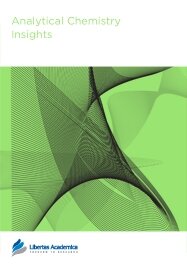

Publication Date: 14 Nov 2007
Journal: Analytical Chemistry Insights

1Discovery Research Laboratories, Nippon Shinyaku Co., Ltd. 14, Nishinosho-Monguchi-Cho, Kisshoin, Minami-ku, Kyoto 601-8550, Japan. 2Department of Transfusion Medicine and Cell Therapy, Kyoto University Hospital, 54 Kawahara-cho, Shogoin, Sakyo-ku, Kyoto 600-8507, Japan.
Abstract: Protein kinases catalyze the transfer of the γ-phosphoryl group of adenosine triphosphate (ATP) to the hydroxyl groups of protein side chains, and they play critical roles in regulating cellular signal transduction and other biochemical processes. They are attractive targets for today’s drug discovery and development, and many pharmaceutical companies are intensively developing various kinds of protein kinase inhibitors. A good example is the recent success with the Bcr-Abl tyrosine kinase inhibitor imatinib mesylate (GleevecTM) in the treatment of chronic myeloid leukemia. Though imatinib has dramatically improved the treatment of Bcr-Abl-positive chronic myeloid leukemia, resistance is often found in patients with advanced-stage disease. Several mechanisms have been proposed to explain this resistance, including point mutations within the Abl kinase domain, amplification of the bcr-abl gene, overexpression of the corresponding mRNA, increased drug efflux mediated by P-glycoprotein, and activation of the Src-family kinase (SFK) Lyn. We set out to develop a novel drug whose affinity for Abl is higher than that of imatinib and whose specifi city in inhibiting Lyn is higher than that of SFK/Abl inhibitors such as dasatinib (SprycelTM) or bosutinib (SKI-606). Our work has led to the development of NS-187 (INNO-406), a novel Abl/Lyn dual tyrosine kinase inhibitor with clinical prospects. To provide an overview of how a selective kinase inhibitor has been developed, this review presents chemical-modification studies carried out with the guidance of molecular modeling, the structural basis for the high potency and selectivity of NS-187 based on the X-ray structure of the NS-187/Abl complex, and the biological profi ling of NS-187, including site-directed mutagenesis experiments.
PDF (871.03 KB PDF FORMAT)
RIS citation (ENDNOTE, REFERENCE MANAGER, PROCITE, REFWORKS)
BibTex citation (BIBDESK, LATEX)
XML
PMC HTML

I have published more than thirty research papers in internationally reputed high impact factor journals including Libertas Academica publications, Proteomics Insights and Analytical Chemistry Insights. I have no hesitation in saying that Proteomics Insights is highly efficient for its rapid and high quality review process and keeping the authors informed at each stage of the publication process. I recommend this journal for students, teachers and research workers who wish to publish their work. ...

All authors are surveyed after their articles are published. Authors are asked to rate their experience in a variety of areas, and their responses help us to monitor our performance. Presented here are their responses in some key areas. No 'poor' or 'very poor' responses were received; these are represented in the 'other' category.See Our Results
Copyright © 2013 Libertas Academica Ltd (except open access articles and accompanying metadata and supplementary files.)
FacebookGoogle+Twitter
PinterestTumblrYouTube